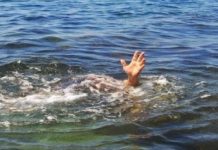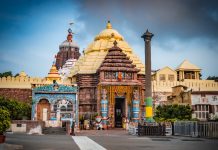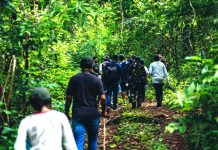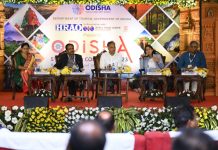OdishaLive Bureau
Odisha offers a lot in the speciality of Eco-Tourism. Bhitarakanika is just one among them.
 On the shorelines of the Bay of Bengal- between Paradip and Chandipur- is Bhitarkanika .Bhitarkanika is in Odisha’s Kendrapara district.
On the shorelines of the Bay of Bengal- between Paradip and Chandipur- is Bhitarkanika .Bhitarkanika is in Odisha’s Kendrapara district.
Bhitarkanika’s actual meaning is ‘Bhitar’ or interior and ‘Kanika’ or the one that is extraordinarily beautiful. Bhitarkanika lies in the estuarine confluence of the Brahmani, Baitarani,Dhamra and Patasala rivers.
It has three protected areas: Bhitarkanika National Park, Bhitarkanika Wildlife Sanctuary and Gahirmatha Marine Sanctuary.
Tipped to get the UNESCO World Heritage Site tag – Sun Temple of Konark having already become one -, the famous Bhitarkanika National Park (BNP) in Odisha is the second largest mangrove forest in India after Sunderbans (Bengal).
 Bhitarkanika is home to 70% of India’s salt water crocodiles, conservation of which began in 1975. The sighting of salt water crocodile nests in the swampy creeks is a rare experience. It is the nesting site for lakhs of Olive Ridley turtles that come ashore to the nearby Gahirmatha Marine Wildlife Sanctuary.
Bhitarkanika is home to 70% of India’s salt water crocodiles, conservation of which began in 1975. The sighting of salt water crocodile nests in the swampy creeks is a rare experience. It is the nesting site for lakhs of Olive Ridley turtles that come ashore to the nearby Gahirmatha Marine Wildlife Sanctuary.
When the Government of India and the United Nations Development Programme focused on saving crocodiles in Bhitarkanika, there were hardly three or four nests sighted in the area and the population of salt water crocodiles was just a hundred.
Now, there are three thousand crocodiles in and around the sanctuary making it one of the safest habitats. The mangroves, wetland and the large number muddy creeks provide perfect conditions for the crocodiles to nest.
BNP was once home the only white-coloured captive crocodile named Gori. Many albino crocodile species are found in the waters.
 The Bhitarkanika Mangroves are home to 55 of India’s 58 known mangrove species. The mangroves dock the saltwater crocodiles and Gahirmatha Beach, which separates the mangroves from the Bengal. This is world’s most important nesting beach for Olive Ridley sea turtles.
The Bhitarkanika Mangroves are home to 55 of India’s 58 known mangrove species. The mangroves dock the saltwater crocodiles and Gahirmatha Beach, which separates the mangroves from the Bengal. This is world’s most important nesting beach for Olive Ridley sea turtles.
The first major nesting or arribada (Spanish for ‘arrival’) occurs around January-February. The turtles come here all the way from South America to lay their eggs on a 35-KM long strip of sand.
They make a hole about half-a-meter deep in the sand and drop 140-180 eggs. After covering them up with sand, they return to the sea. A second mass nesting occurs in March/April.
 Bhitarkanika National Park hosts lakhs of migrant water birds during monsoon.In winter too birds come here .Over the years, the number of winged guests have been on the rise.
Bhitarkanika National Park hosts lakhs of migrant water birds during monsoon.In winter too birds come here .Over the years, the number of winged guests have been on the rise.
The birds’ habitat in the core area of the park is spread across around four hectares. There is plenty of food for the birds as the place is crisscrossed by countless water inlets and nullahs. Non-interference by human beings, ideal climatic condition, cool breeze and the river system all these contribute to the influx of migratory birds from foreign lands.
Prominent among the species which come to BNP for nesting are Grey Heron, Purple Heron, Darter, Cormorant, Large Egret, Intermediary Egret and Little Egret. It was the noted ornithologist Salim Ali who had made a chance-discovery of the bird’s habitat while on a visit to Bhitarkanika in 1981.
 The wetland is represented by as many as Bhitarkanika National Park is a prime habitat of leopard cat, fishing cat, jungle cat, hyena, wild boar, spotted deer, sambar, porcupine, dolphin, and a large variety of resident animals.
The wetland is represented by as many as Bhitarkanika National Park is a prime habitat of leopard cat, fishing cat, jungle cat, hyena, wild boar, spotted deer, sambar, porcupine, dolphin, and a large variety of resident animals.
The land of lush green mangroves, migrating birds and turtles, the menacing estuarine crocodiles, meandering water courses, tranquil surrounding intercepted by the chirping of birds and the ever embracing nature, enthrall visitors from across countries.
Indeed,no visit to Odisha is complete without a trip to Bhitarkanika.
How to Reach BNP
By Air: The nearest airport is Biju Patnaik International Air port,Bhubaneswar which is 190 KMs away.
By Rail: Bhadrakh (77 KMs) is the nearest railhead.
By Road: Chandabali is the nearest town at a distance of 35 KMs. Dangamal is the starting point of the Park. The most convenient route from Bhubaneswar is via Rajnagar.Bhitarkanika is 160 KMs from Cuttack.
Entry Points
 Khola and Gupti are the two main entry points to enter Bhitarkanika National Park. Visitors have to take entry permit from the Forest Check Gate at Khola and Gupti.
Khola and Gupti are the two main entry points to enter Bhitarkanika National Park. Visitors have to take entry permit from the Forest Check Gate at Khola and Gupti.
Both Forest Department’s and private boats are available at both the places.
Private boats are also available at Jayanagar and Chandbali.
Inside Bhitarkanika
By Boat: From Chandabali and Rajnagar, the journey by motor launch is about three hours. From Rajnagar, one can approach Dangamal via Nalitapatia by launch. From Kolkata the nearest destination is Dhamara from where a launch is available right up to Chandabali.
Within the reserve: Most places within the estuarine reserve can only be reached by boat. A shrine to Mangala Devi marks the beginning of the sanctuary.
Best season
Winters are cold with temperatures ranging from 15-270C. Temperatures normally range between 17-320C in summer which can rise up to 450C in April. Average rainfall of 1450 mm.The area is prone to cyclones and tidal waves that usually occur between April and May and between October and December.
Accommodation
Accommodation is available at forest rest houses in and around the park at a nominal cost. For bookings contact Divisional Forest Officer, Rajnagar (Tel :06729- 272460).
















Odisha has really a lot to offer to its visitors and guests, from beaches, historical sites, temples and other monuments. Moreover, it has got a huge strengths in terms of nature, eco and wildlife tourism. Bhitarakanika is just one among many such sites. People should explore.